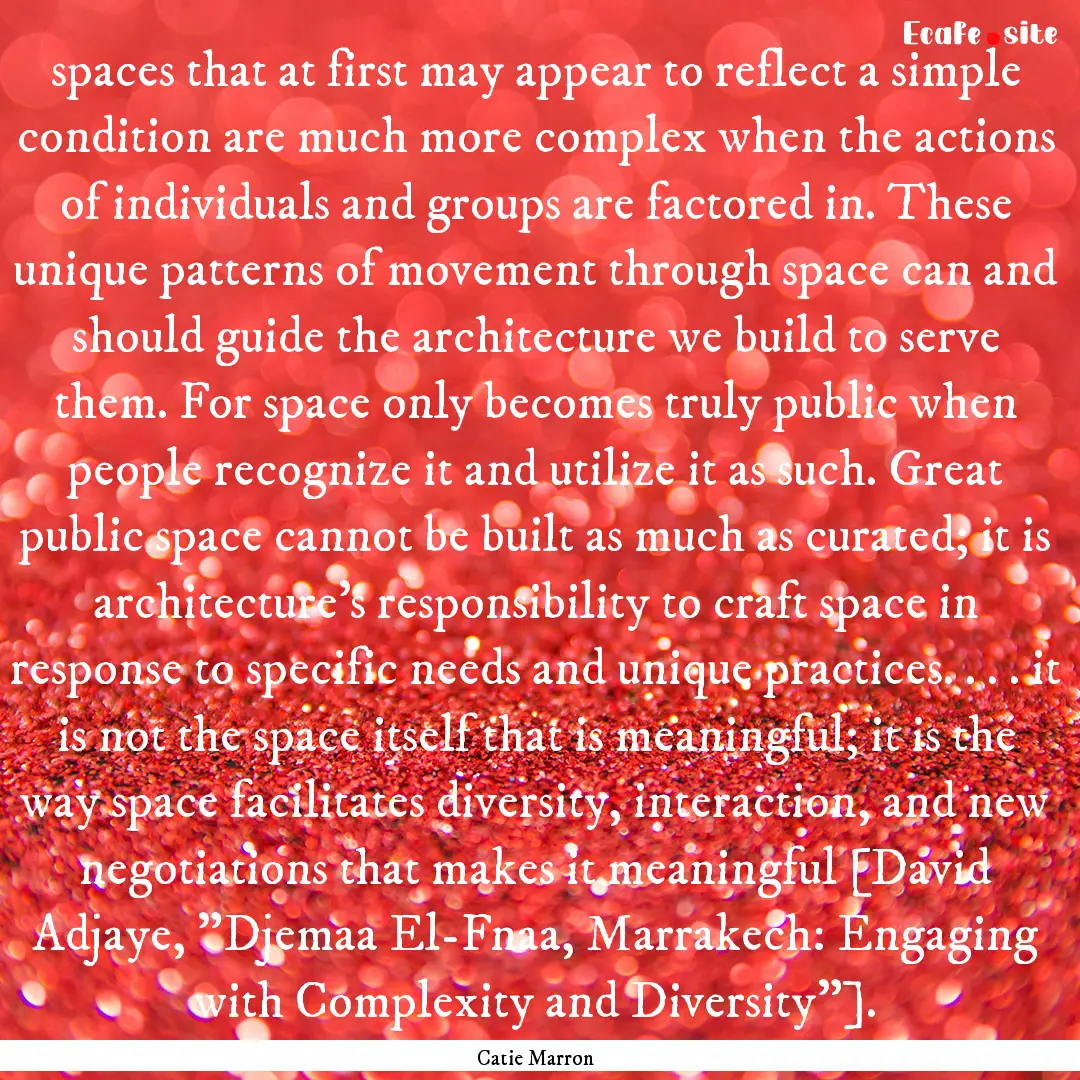
Report, if you have a problem with this page“ spaces that at first may appear to reflect a simple condition are much more complex when the actions of individuals and groups are factored in. These unique patterns of movement through space can and should guide the architecture we build to serve them. For space only becomes truly public when people recognize it and utilize it as such. Great public space cannot be built as much as curated; it is architecture's responsibility to craft space in response to specific needs and unique practices. . . . it is not the space itself that is meaningful; it is the way space facilitates diversity, interaction, and new negotiations that makes it meaningful [David Adjaye, "Djemaa El-Fnaa, Marrakech: Engaging with Complexity and Diversity"]. ”

Catie Marron
From : City Squares: Eighteen Writers on the Spirit and Significance of Squares Around the World



